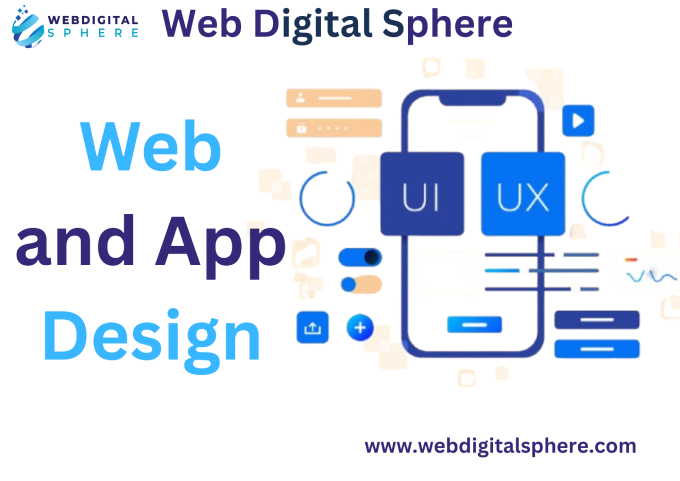Understanding the Importance of Web and App Design

What is Web and App Design?
Web and App design refers to the creation and organization of content, layouts, and interactive elements on a website. It blends art and technology to provide users with a seamless and engaging online experience. A well-designed website ensures easy navigation, fast loading speeds, and an attractive appearance, making it vital for businesses seeking an impactful digital presence.
What Makes App Design Unique?
While web design caters to browser-based experiences, app design focuses on creating intuitive interfaces for mobile and desktop applications. App design prioritizes functionality and performance on specific devices, often involving complex interactions tailored to user behavior. Unlike web design, app design demands an intimate understanding of platform-specific guidelines, such as those for iOS or Android.
The Intersection of Web and App Design
Web and app design share a common goal: delivering exceptional user experiences. Many businesses opt for designs that provide consistent branding and functionality across both platforms. As Progressive Web Apps (PWAs) rise in popularity, the lines between web and app design continue to blur, offering a unified user experience.
Key Elements of Effective Web and App Design
User Experience (UX) Design
UX design focuses on how users interact with a website or app. A great UX ensures that the product is functional, easy to navigate, and enjoyable. For example, intuitive navigation menus, clear call-to-action buttons, and a logical content structure all contribute to a positive user experience.
User Interface (UI) Design
UI design centers on the visual aspects of a digital product. It involves selecting the right colors, typography, icons, and interactive elements to create an aesthetically pleasing and cohesive interface. While UX ensures usability, UI focuses on the look and feel, working hand-in-hand for the best outcomes.
Responsive and Adaptive Design
Responsive design ensures that a website or app looks and functions perfectly on all screen sizes, from desktops to smartphones. Adaptive design goes a step further, tailoring layouts for specific devices or resolutions. These design principles are critical in today’s mobile-first world, where users access content on a variety of devices.
The Process of Designing Web and App Interfaces
Research and Planning Phase
Every design project begins with thorough research. Designers analyze the target audience, competitors, and business objectives to create a foundation for their work. This phase is crucial for understanding user needs and setting goals for the project.
Wireframing and Prototyping
Wireframes are basic blueprints of the website or app, showcasing the structure without design elements. Prototypes, on the other hand, add interactivity, giving stakeholders a clear idea of how the final product will function. These steps help in identifying potential issues early on.
Testing and Iteration
Testing involves gathering user feedback and fixing any problems before launch. Iterative design ensures the final product meets user expectations, delivering a polished and functional interface. From usability tests to A/B testing, this phase is essential for optimizing the design.
The Role of Aesthetics in Web and App Design
Color Theory and Branding
Colors evoke emotions and play a significant role in how users perceive a brand. For instance, blue often symbolizes trust and stability, making it a popular choice for financial and tech companies. Incorporating brand colors into design elements ensures consistency and strengthens brand identity.
Typography and Readability
Typography affects readability and the overall tone of a website or app. Choosing the right font style, size, and spacing can make the content more engaging. For example, sans-serif fonts are often used in digital interfaces for their clean and modern appearance.
Visual Hierarchy and Layout
A well-structured layout guides users through content effortlessly. By prioritizing important elements, such as headlines or call-to-action buttons, designers can influence user behavior. Techniques like using contrasting colors or varying font sizes help establish a clear visual hierarchy.
Trends in Modern Web and App Design
Minimalist Design
Minimalism emphasizes simplicity and functionality, removing unnecessary elements to focus on core features. This trend ensures clean aesthetics and faster loading times, enhancing the user experience.
Dark Mode and Accessibility Features
Dark mode has become increasingly popular for its modern look and reduced eye strain. Coupled with accessibility features like adjustable font sizes, these design choices make digital products more inclusive.
The Rise of Microinteractions
Microinteractions are small, subtle animations or feedback responses that enhance user engagement. Whether it’s a like button animation or a progress bar, these details add a layer of interactivity and delight to the user experience.Cont
The Importance of Web and App Design
The Relationship Between Web and App Design and User Retention
How Intuitive Navigation Enhances Retention
Intuitive navigation is a cornerstone of both web and app design. Users should be able to find what they’re looking for without confusion or excessive clicks. Simple, well-structured menus, search bars, and breadcrumb trails help users navigate seamlessly. Poor navigation leads to frustration, increasing bounce rates, while intuitive design encourages users to stay longer and return.
The Role of Speed and Performance
In web and app design, speed is everything. Users expect fast-loading websites and apps; delays of even a few seconds can lead to abandonment. Optimizing images, using efficient coding practices, and leveraging content delivery networks (CDNs) are key strategies for enhancing performance. For apps, minimizing resource usage ensures smooth performance across devices.
Personalization in User Interfaces
Personalization transforms generic interfaces into tailored experiences. By integrating features like location-based suggestions, user-specific dashboards, and customizable settings, designers can create products that feel unique to each user. This approach builds loyalty and keeps users engaged over time.
Choosing the Right Tools and Technologies for Web and App Design
Popular Design Tools
Designers rely on tools like Adobe XD, Sketch, and Figma for crafting stunning web and app interfaces. These platforms offer collaboration features, making it easier for teams to work together. For wireframing and prototyping, tools like InVision provide interactive previews that simulate the user experience.
Frameworks and Coding Languages
Web and app designs come to life with the right coding frameworks and languages. HTML, CSS, and JavaScript are essential for web design, while frameworks like React and Vue.js add interactivity. For apps, Swift is popular for iOS, while Kotlin dominates Android development. Cross-platform frameworks like Flutter and React Native bridge the gap between web and app design.
The Role of AI in Design
AI-powered tools are revolutionizing web and app design. Platforms like Adobe Sensei and Canva’s AI features assist in generating design elements, while machine learning algorithms predict user behavior to inform design decisions. AI streamlines the design process, enabling more efficient and personalized outcomes.
The Future of Web and App Design
The Rise of Augmented Reality (AR) and Virtual Reality (VR)
AR and VR are reshaping how users interact with digital products. From virtual try-ons in e-commerce apps to immersive VR gaming interfaces, these technologies offer exciting possibilities for designers to create engaging, experiential designs.
Voice User Interfaces (VUIs)
With the increasing use of voice-activated devices like Alexa and Google Assistant, VUIs are becoming an integral part of design. Creating interfaces that respond to voice commands seamlessly is a growing trend in both web and app design.
Sustainability in Digital Design
Eco-friendly design is gaining traction, with a focus on energy-efficient coding practices and lightweight designs. Sustainable web and app design aim to reduce carbon footprints while maintaining functionality and aesthetics.
Conclusion
Web and app design are vital components of modern digital marketing experiences, blending creativity, functionality, and technology to meet user needs. A well-designed website or app enhances usability, builds trust, and fosters brand loyalty. By embracing principles like user-centric design, responsive interfaces, and emerging trends, businesses can create products that stand out in competitive markets. The future of web and app design promises innovation and inclusivity, ensuring these digital tools continue to shape our everyday lives.
FAQs
1. Why is web and app design important for businesses?
Web and app design directly impact user engagement, brand perception, and customer retention. A visually appealing and functional design builds trust and drives conversions.
2. What’s the difference between web and app design?
Web design focuses on browser-based experiences, while app design is tailored to mobile and desktop applications. Both aim to deliver intuitive and user-friendly interfaces.
3. How can I ensure my web and app designs are user-friendly?
Focus on UX principles, ensure responsive design, and conduct usability testing. Simple navigation and fast loading times are essential for a positive user experience.
4. Which tools are best for web and app design?
Popular tools include Adobe XD, Figma, and Sketch for design, along with frameworks like React for web and Swift for app development. AI tools also enhance efficiency.
5. What trends should I follow in web and app design?
Stay updated with trends like minimalism, dark mode, and microinteractions. Explore emerging technologies like AR, VR, and voice user interfaces for innovative designs.



